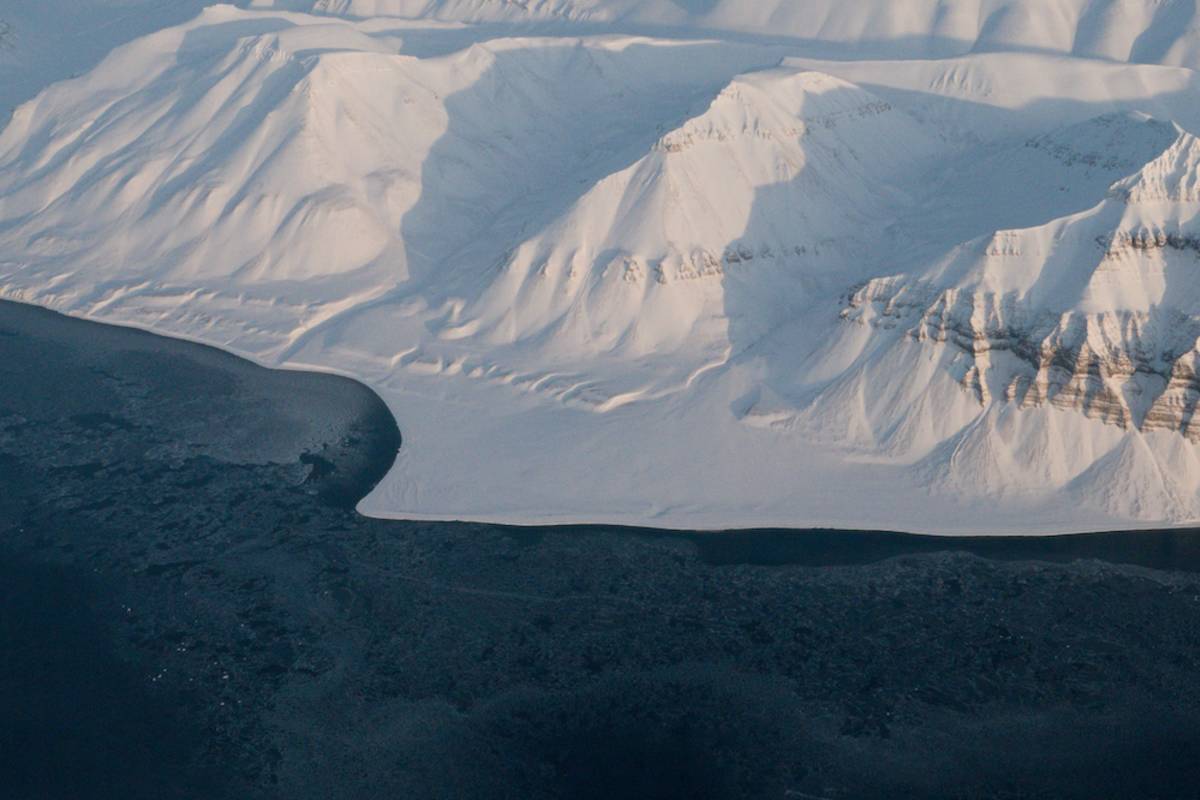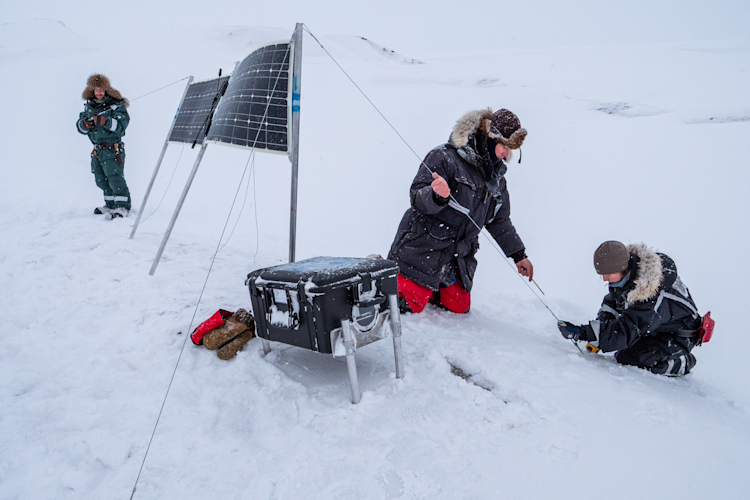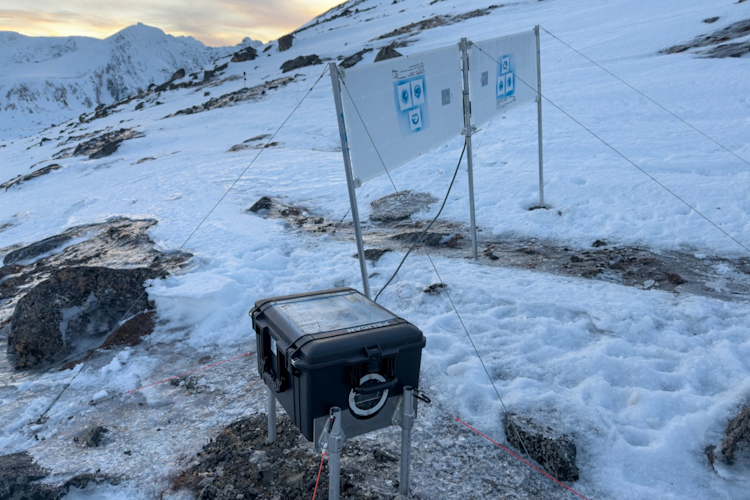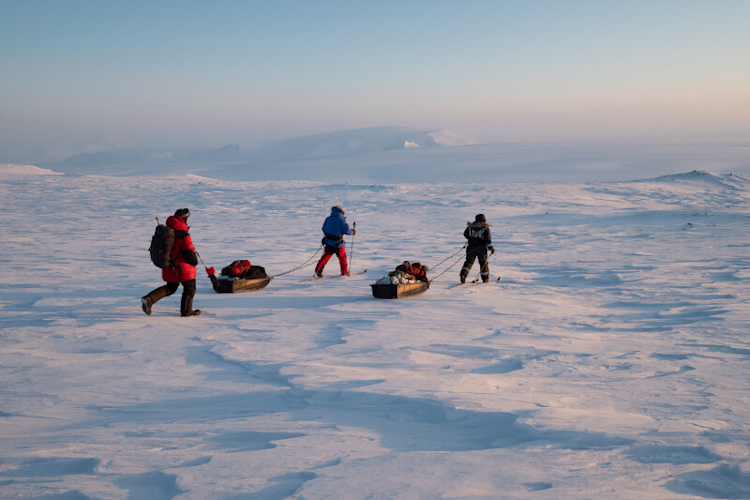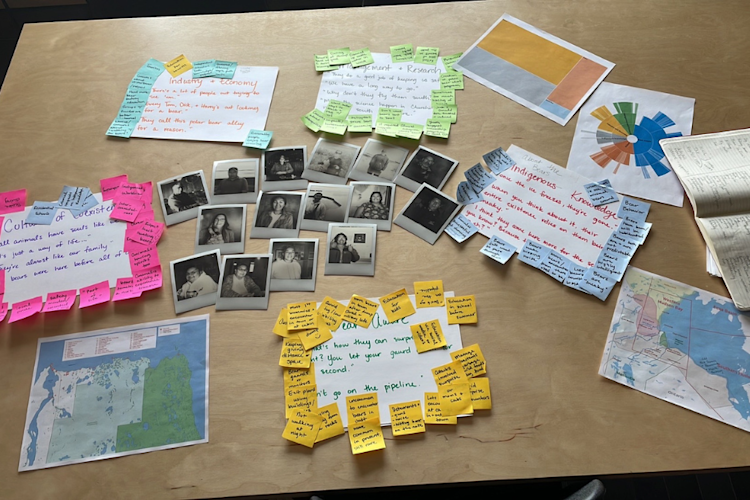Q: This year, you also tested the effectiveness of using Synthetic Aperture Radar, or SAR, to locate polar bear den sites under the snow, working with students from Simon Fraser University. How did that project go?
A: That whole project was touch and go, with an amazing number of hurdles. One of the biggest problems was obtaining permission for the SAR equipment to leave North America. We filled out all the paperwork and then waited and waited and waited. The students had packed and were ready to depart Canada, and the helicopter had arrived—but no paperwork. Finally, we put in a call to Senator Jon Tester’s office to help us get the equipment across the border. We were just hours from calling off the project, when we got a call saying it had been approved.
Another challenge is that we did not receive the aluminum material needed to build a mount for the SAR for the inside of the helicopter. We had shipped something like 10 packages to Svalbard via a freight carrier. Everything made it except that.
Thankfully our friends at the Norwegian Polar Institute opened the doors to their workshop and helped us scour the island for aluminum. We finally found some square stock from a colleague. She saved our project. The entire team was in the shop cutting and welding, working through the night to build a custom mount. Somehow we got it done.
Q: I heard there were also weather and covid complications. What was that like?
A: After we built the mount for radar equipment, bad weather came in and we were stuck on the ground for two days. We tried to make one flight but the clouds were so bad it just wasn’t safe so we had to turn around.
Then, when the weather finally cleared, the helicopter pilot tested positive for covid. It was a mild case but the kicker was that those of us from the U.S. and Canada needed a negative test to return home.
When testing SAR, there’s room for just one person besides the pilot because the equipment takes up so much space. They have to fly with the door open when testing—making the risk of catching covid low—so one of the students decided to double-mask and take a chance.
In the end, we ended up testing SAR on two known den sites—the same dens where we placed our den cameras. Now we’ll wait to see what the data shows.
